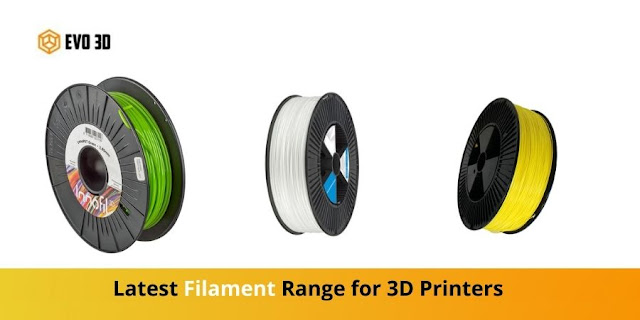Struggling to Choose the Right Type of Filament For 3D Printers? This Will Help!
If you have not yet explored 3D printing technology, it is time to learn about it. Many businesses are using it in various sectors to save costs and errors in production. Many demanding sectors, with the help of 3D technology, want to go beyond design limitations and need quick production. After selecting a printer for your project, you can decide to use filament for different types of applications.
Some methods of 3D printing are incomplete without using printing filament. It is the thermoplastic feedstock required with fused deposition modelling 3D printers. Of course, many varieties and colours of filaments are there to choose from, each requiring different temperatures to print. Therefore, here we will tell you how to buy filament for 3D printers.
Filament for FDM Printers
There are many types of printing technology we have today. From Fused deposition modelling (FDM) to stereolithography (SLA), you have an endless number of choices. But here we will talk about fused deposition modelling (FDM) printing. An industrial FDM printer works with thermoplastic filament that can be melted, deposited, and cooled.
An FDM 3D printer takes a spool of plastic filament and forces it through a heated nozzle, which melts the material and extrudes it onto a build platform. Afterwards, it is sanded and painted to form an entire model.
This technology is ideal for creating rapid prototype parts and is one of the best printing methods. It is even cheaper than other printing methods like SLS. If you want to explore different opportunities with this printer, you should begin by choosing the right printing filament. Every filament has unique properties, uses, and characteristics to consider.
Choosing the right polymer is essential to getting the most from 3D printing. So, let's find out some of the filaments used in FDM printing for prototypes. However, the most common filaments are PLA, ABS, PET, Nylon, TPU, and PC.How to Choose the Right Type of Filament for 3D Printers? This Will Help!
1. Mechanical Strength: It is the first priority when it comes to narrowing down the choices for our prototype. It is a good idea to be on the safe side and not merely use the maximum value that our component needs to withstand. We all know that choosing a high-performance material can unnecessarily raise costs for no reason for making a static object.
2. Obviously, the printing requirements of temperature and size limit the choice of materials that can be processed accurately with the chosen 3D printer. These requirements cannot be taken lightly because you can print something for sure with repeatable results. So, more stringent requirements are necessary.
3. The HDT, or heat deflection temperature, means the temperature at which a specimen is subjected to a load that flexes and deforms in a plastic way. The CUT, or continuous use temperature, indicates the material and its temperature that can work continuously for an indefinite time. These data are crucial for the choice of the material as compared to other mechanical resistance functions of the temperature.
4. When looking for a good aesthetic result for some special occasions, it is essential to evaluate whether the chosen material can be treated with a particular type of material and surface finish for the best performance.
5. Cost: Cost is one of the essential decisions to make choices for the realisation of elements.
Conclusion
When developing FDM printing prototypes, these factors will help you decide which filament you need for your printer.
Getting into 3D printing means exploring different opportunities it brings. If you buy an industrial best 3D printer, there are various filaments to choose from. FDM is one of the most popular technologies right now. So, you can consider it now.

.png)



Comments
Post a Comment